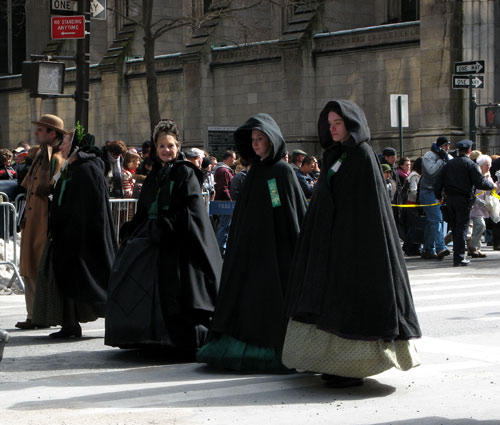Day: March 17th, 2007
Away from Her
This week, MoMA presents “Canadian Front 2007“: eight New York premieres of new and recent features made in Canada, organized by the museum’s Department of Film, and presented in cooperation with Telefilm Canada.
This afternoon, I attended a screening of Away From Her, the feature-length directorial debut of Canadian actress Sarah Polley. Polley directed a short film, Don’t Think Twice, in 1999, which premiered at the Toronto International Film Festival; her second short, I Shout Love, won the Best Live Action Short Genie in 2002.
Polley is as well known for her political activism as for her acting talent; on hiatus from acting in the mid-1990s, she was involved with the Democratic Socialist Party, the Ontario Coalition Against Poverty, and the anti-nuclear group Canadian Peace Alliance, losing two back teeth in a scuffle with police during an anti-Conservative rally at Toronto’s Queen’s Park in 1995.
Away from Her is based on award-winning Canadian writer Alice Munro’s short story “The Bear Came Over the Mountain” from her 2001 collection Hateship, Friendship, Courtship, Loveship, Marriage. The film is produced by Jennifer Weiss (who also produced In Between Days), Simone Urdl, Daniel Iron and Victoria Hirst; Atom Egoyan, who directed Polley in Exotica (1994) and The Sweet Hereafter (1997), served as Executive Producer.
Polley’s debut is a tender exploration of the obligations and pain of marriage. Gordon Pinsent and the eternally lovely Julie Christie star as Grant and Fiona, a couple whose 44-year marriage is tested when Fiona begins to suffer from Alzheimer’s and decides to move into a nursing home. Over the course of her first month’s stay, during which new residents are forbidden visitors, Fiona loses virtually all memory of her husband and begins to develop a romance with a fellow nursing home resident. Heartache ensues.
The film is a low-key, intelligent, and sensitive study of Alzheimer’s and its ramifications. Guilt and shame come to color Grant’s efforts to care for his wife – their seemingly perfect marriage has had its history of romantic betrayals – and through these trials, he eventually grasps the true meaning of selfless love. His self-discovery, which comes as his wife retreats into her own hazy world, is at turns poignant and harsh, funny and ironic.
The audience members – among them, Lili Taylor with whom I stood on line outside the theater — seemed to respond well to the film; towards the end, the theater was filled with the sounds of their sniffles and sighs. Variety named Polley one of their 10 Directors to Watch.
The MoMA Sculpture Garden under snow:



Luck o’ the Irish
Yesterday’s storm with its 5 inches of snow wiped away the green stripe traditionally painted along Fifth Avenue for the St. Patrick’s Day parade — the oldest and most popular parade in New York City.

According to the information website, the city’s first St. Patrick’s Day parade was organized in 1762 by Irish soldiers serving in the British army. The early marchers would form up at their parish churches or their organizations’ meeting places and march to the Old St. Patrick’s Cathedral — the oldest Roman Catholic church building in the city, still at Mott and Prince Streets. As the City and the Cathedral moved uptown so did the parade.
Anticipated attendance hovers around 2 million, converting the streets uptown into a sea of green, white and orange, as the echo of endless bagpipes played through the air. Spectators lined the streets tricked out in green hats, green boas, flashing green necklaces, green braids, and in some cases, green face paint. My new boots proved their waterproofability as I stood behind the police barriers in four inches of icy slush — so really, they were entirely worth it. Really.









The St. Patrick’s Day parade is one of the few remaining where no cars, floats, buses, trucks or other vehicles are allowed. And controversially, a gay presence has been banned since 1991 — which ironically, makes the New York City parade more conservative than the one in Dublin.
Queens has hosted a more inclusive “St. Pat’s for All” in early March since 2000.
Search
Popular Tags
Categories
Archive
- July 2010
- July 2009
- January 2009
- November 2008
- September 2008
- August 2008
- July 2008
- June 2008
- May 2008
- April 2008
- March 2008
- February 2008
- January 2008
- December 2007
- November 2007
- October 2007
- September 2007
- August 2007
- July 2007
- June 2007
- May 2007
- April 2007
- March 2007
- February 2007
- January 2007
- December 2006
- November 2006
- October 2006
- September 2006
- August 2006
- July 2006
- June 2006